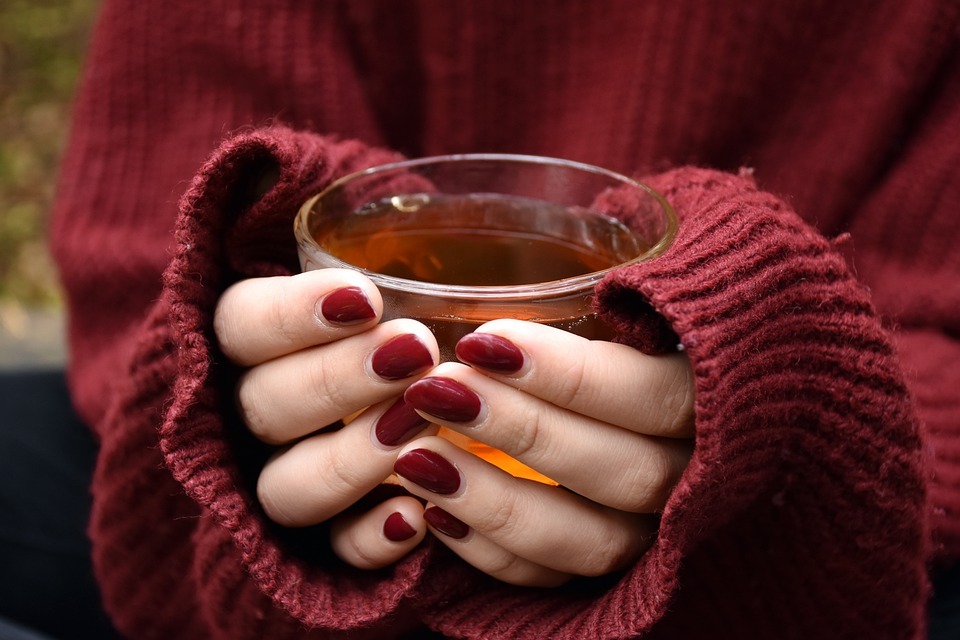Sweaters have been basic apparel for generations, providing warmth, style, and comfort. The following guide will assist you in understanding this fashion staple and give you the ultimate guide to sweaters.
View this post on Instagram
Types of Sweaters Based on Styles
Sweaters come in various styles, each with its own set of characteristics and applications. Some are svelte and designed for fashion rather than function; others are warm and comfortable, and they keep you safe from the weather. The following are the most popular sweater designs:
Pullovers
These sweaters are ideal for practically any event or setting, thanks to their ease of use. Pullovers are often light and are best worn in cool to cool-to-cold temperatures. Any sweater without a zipper or buttons is classified as a pullover; thus, the possibilities are unlimited.
This apparel can be dressed up or down and goes with any fall look. As a result, you may wear these garments to the gym or a pleasant family meal.
Crewnecks
Crewnecks belong to the pullover family and are distinguished by their circular neckline around the collar. Although this appearance is more casual than most of the other items on this list, many dressy sweaters are available in this design. A crewneck gives your neck more room and allows for better airflow, which is vital if you’re wearing it inside or in the spring or summer.
Turtlenecks
Turtlenecks are a type of pullover that differs from others in the family by having a longer collar. The collar of a traditional turtleneck is usually thin and bendable. Mock necks are similar to turtlenecks in that they have a noticeable but shorter neckline.
Mocks are more appropriate for warmer weather, but both designs are attractive and appropriate for formal occasions. In addition, their long collars give good cold protection.
Cardigans
Because traditional pullovers tended to mess up hair and makeup when removed, these sweaters were designed. These long-sleeved shirts have a low-cut neckline and buttons. Because of their loose design and elasticity, they’re commonly referred to as “open sweaters.”
Cardigans are thin sweaters usually always used as a layering piece; they go with almost any outfit and provide a rustic, classy appeal.
Quarter-zip and Full-zip
Compared to other sweaters, these have zippers instead of buttons and are usually more sporty and thin. Full-zips feature a full-length zipper, whereas quarter-zips have a zipper that reaches the top of your chest.
Some zipper sweaters are designed to be thick, making them ideal for cold-weather activities like running or trekking. As a smart, professional outer layer, fancier zip-ups look well with office clothing.
Sweater Types Based on Materials
Aside from style, the material from which a sweater is produced is crucial. Insulated sweaters are fantastic in the winter, while sporty sweaters are great for sports. The following are the most common sweater fabrics:
Cashmere
Cashmere is a luxurious material made of a fine collection of strands that are pleasant to the touch. Cashmere is known for its insulating characteristics, comfortable feel, and lightweight quality.
The majority of sweaters created with this fabric are cashmere mixes, containing 5-20% other materials such as wool or synthetics. Regardless of the blend, cashmere is a long-lasting fabric that will last for many years.
Wool
Wool is the most prevalent warm sweater material, and it’s utilized in almost all winter outfits. It’s noted for its outstanding warmth and long-lasting quality. Wool apparel is, above all, extremely soft.
Most people are unaware of how water-resistant wool is, as water makes up 30% of its weight. Primary sheep, as well as llamas and alpacas, are used to make the fabric. Clothing made of pure wool combinations can scratch the skin, therefore wear an undershirt with these sweaters.
Cotton
Pullovers, hoodies, and light sweaters should all be made of cotton. Cotton does not insulate as well as synthetics or wool, but it is much more breathable and breezy.
Compared to other sweaters, this material does not irritate the skin, making it a good choice for children’s clothes. Cotton, like other materials, can be dressed up or down.
Synthetic
The widespread usage of synthetic materials is due to increased athleisure and shorter production times. These are lab-created fabrics made from sustainable materials that are extremely flexible and adaptable.
Synthetics are used in most zipped sweaters because of their wicking properties; this is the recommended fabric for runners and hikers, especially in the winter. Polyesters and polyamides are less expensive than other materials while being less durable. Choose sweaters that are a mix of synthetic and natural fibers.
View this post on Instagram
Sweater Maintenance
By properly caring for your sweater, you may avoid snagging, shrinking, and pilling.
Choose Sweaters Carefully
Although a $250 cashmere sweater may appear pricey, the more expensive sweaters frequently have a thicker, tighter weave that will last longer than their less expensive counterparts. Examine the sweater’s weave before purchasing; sweaters with a tighter weave are more likely to last than those with a more open weave.
You might also want to explore a cashmere blend—you’ll lose a little softness, but you’ll gain a sweater that can withstand more wear and tear.
How to Care for a Cashmere or Wool Sweater
Your wool or cashmere sweater can withstand a (very gentle) tumble in the washing machine unless the care instructions specifically state that it should be dry cleaned exclusively. Here’s how to wash a wool or cashmere sweater while keeping it safe from damage.
Prepare Your Sweater to Be Laundered
Turn your sweater inside out to allow wear and tear to occur on the inside of the garment rather than the visible section when you’re wearing it. To reduce the likelihood of snags, button, snap, or zip any fasteners.
Gently Wash Your Sweater
Fill the sink with tepid water, incorporate a little detergent or baby shampoo, whisk it around a few times, and soak for 10 minutes. Rinse thoroughly yet gently.
Use the gentlest setting, avoid the spin cycle, and use a detergent that rinses clean and contains no colors if you wish to use your machine. Unless you enjoy pilling, only wash like with like—don’t wash your sweater with denim or other abrasive textiles.
Be Careful When You Dry Your Sweater
Wringing out a cashmere or wool sweater can stretch the fibers and cause them to become misshapen. Instead, put it flat on a clean, dry towel and press out the extra water by rolling the towel in a jelly roll-like spiral. Then unroll it and lay your sweater flat to dry on a clean towel.
How to Take Care of a Pilled Sweater
When your sweater rubs against something else, such as your purse at your hip or itself under your sleeves, small pills can form. Fortunately, removing the pills and getting your sweater back in form is simple.
Don’t Pull Sweater Pills
Pulling pills off can be very tempting, but you risk ruining the sweater.
Make Use of the Proper Sweater Tools
Clothing shavers are particularly created instruments that can help you remove pills from your sweater and restore it to its original condition.
You can utilize a small pair of scissors to clip off larger pills far away from the fabric carefully.
Protect Your Sweater When You Wash
It’s easier to avoid pills than it is to remedy them. Store your sweater in a lingerie bag to aid in protecting it when you wash it, and use fabric softeners to assist in conditioning the fibers and lessen the likelihood of pilling in the future.
For more how-tos, learn how to look great in a bikini and determine real versus fake handbags and shoes.
What to Do If Your Sweater Shrinks
Someone manages to smuggle your favorite wool sweater into the dryer. That isn’t to say you have to offer it to a small child. After a spin in the dryer, here’s how to refashion your sweater.
Soak It Once More
Place the sweater, along with a capful of conditioner, in a sink filled with water. Allow for a 10-minute soak to soften the fibers.
Reshape Your Sweater and Allow It to Dry
Reshape the sweater gently to the desired dimensions, then spread it out to dry on a towel.
View this post on Instagram
Snags in Sweaters and How to Fix Them
A simple run-in with a nail or sharp edge is all it takes to cause major damage to your sweater. Fortunately, you can fix many sweater snags to keep your sweater looking new.
Use a Crochet Hook or Needle
A needle or crochet hook can be used to gently press or tug the snag back into the sweater’s interior.
Preventing It From Unraveling
Knot the snag so that it can’t reappear or get worse. To prevent the knot from getting worse, put a dab of clear nail paint on it.
Sweaters: How to Store Them
When it’s time to store your sweaters for the season, make sure they’re clean—crumbs or stains can attract pests and become more difficult to remove after months of storage.
To naturally repel bugs, use lavender or cedar, and put your things in an airtight bag or container in a dry, temperature-controlled part of your home (skip humid basements or hot attics).
Taking Care of Your Sweaters at Home
Here’s how to wash your sweaters at home and avoid paying for expensive professional laundry services:
Understand Your Materials
Always check the label on any sweater before washing it at home. Any fabric in the wool family is considered the most delicate.
If you have something that contains even 10% wool, you should clean it the same way you would something made entirely of wool. This also applies to alpaca, goats, and other animal hair.
Pretreating Is King
Because of the weave, if you spill coffee on a cotton shirt, it leaves a topical stain. However, because the yarns in sweaters are spun and twisted, any stain on a sweater usually results in a deep and intricate stain. A wash and stain bar is recommended on the cuffs, collars, and other exposed areas where there may be makeup or deodorant stains.
Tepid Is Top
Sweaters should always be soaked in moderate or tepid water. They shrink in the washing machine and dryer when exposed to too much heat.
Use a Mild Shampoo
When it comes to cleaning sweaters, most people assume that a cleanser is the best option. When you apply a cleanser or detergent, however, the enzymes in the product rob your sweater of its natural fibers.
This could make the sweater feel brittle and crunchy—you wouldn’t want to seem like you just got a perm or colored your hair, would you? So, it is suggested that you use gentle shampoo instead.
Soak It Up
Soak your sweater for up to half an hour with minimum movement before washing it. If you spin your sweater too much, the fibers may become agitated, causing it to shrink.
Don’t Wring
Roll your sweater into a ball to remove extra water. To drain the extra water, wrap your sweater in a towel (similar to how you wrap your hair after it’s been washed).
Lay It Down
Avoid drying your sweater over a shower rod or on a hanger, as this may cause it to lose its shape. Instead, place it on a clean towel in your bathtub. This is the most effective method for achieving excellent drying results.
View this post on Instagram
What Is the Best Way to Wear a Sweater?
Sweaters are incredibly adaptable in how they can be worn and styled. These are simple items that may be layered or worn alone. However, when styling a sweater, there are a few things to keep in mind.
Proportions
Playing with proportions, whether an oversize boyfriend cardigan or puffy sleeves, is one way to add interest to a look. Remember that because a sweater has volume at the top, it must be slim at the bottom. That means wearing it with slim or straight jeans, short or mid-length skirts, classic-cut pants, or slip dresses.
Tucking
Tucking a sweater in the front leads to an hourglass form with a clearly defined waistline, which is one of the clean-cut looks. You could tuck a basic sweater into jeans, a skirt, or shorts.
Dress It Up
A sweater dress is a fashionable and comfortable solution to keep you warm. For added dimension, wear a pair of stockings or leggings. There are no wrong answers for pairing a sweater with sneakers, pumps, or boots. You can also use a long necklace, belt, or scarf to enhance interest.
Layer It
Layering a knit over a slip dress is another fantastic option. For starters, you’re dressed for summer. Second, the aesthetic features a vibrant combination of colors, materials, and textures.
Cut It Out
Consider sweaters with cut-out elements or cropped designs if you’re looking to add a new sweater to your wardrobe. These are a lot of fun to wear and can be worn over a tank top on cooler days.
And, of course, you may wear a sweater up or down at any time. Any sweater can be worn with leather boots, white sneakers, or fashionable loafers, making it ideal for running errands. A coffee date attire or a girls’ night-out look can benefit from high heel boots or pumps.
If you take the time to select the correct fabric, fit, and function for your sweater, you’ll be warm and toasty while everybody else is left out in the cold.




